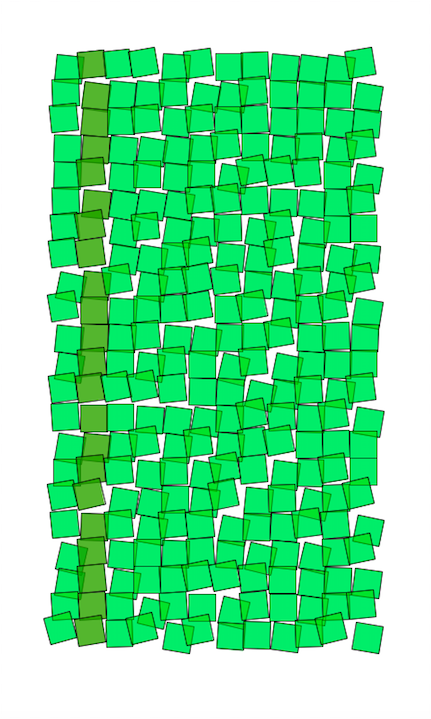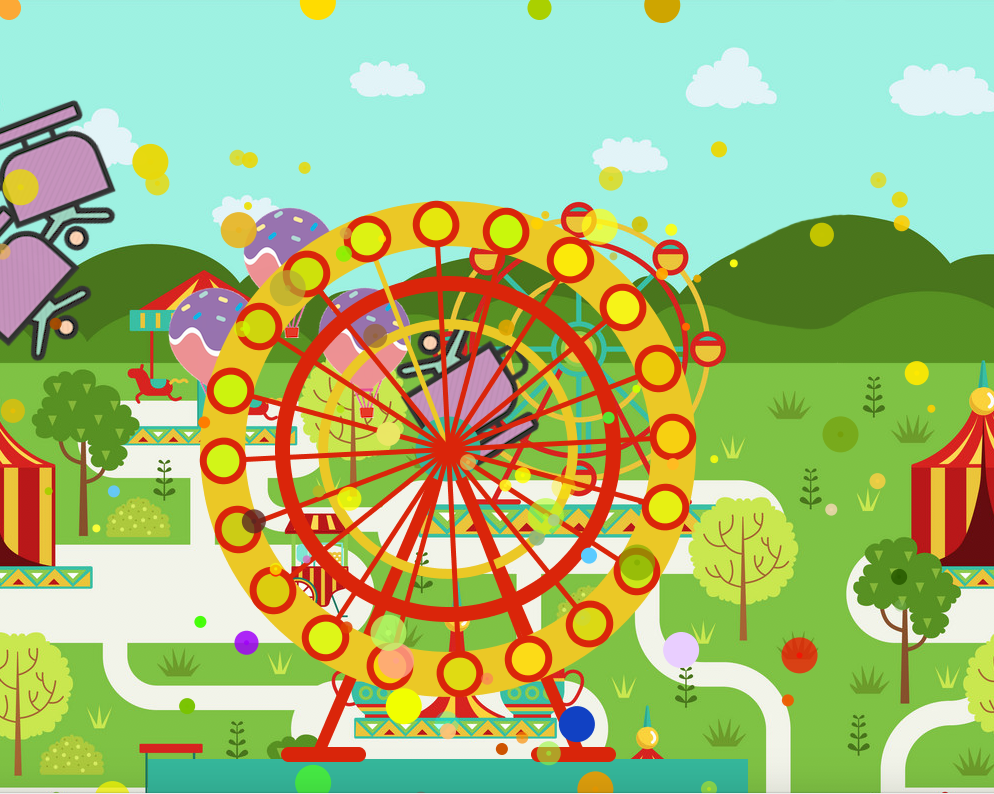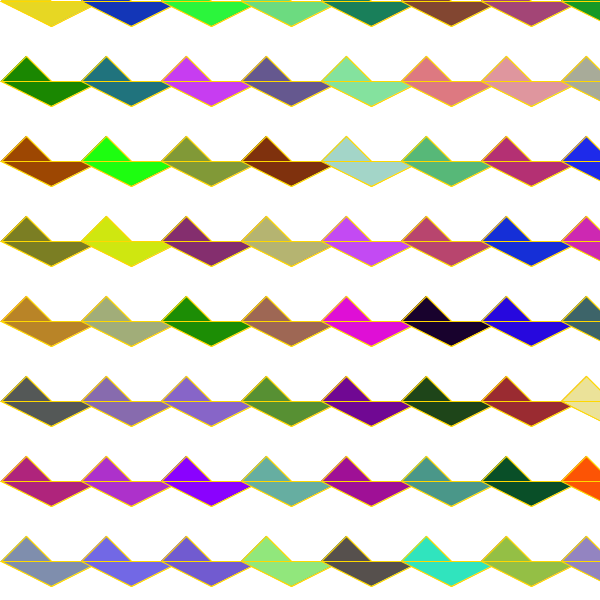Grace Hertlein has a very different approach when it comes to computer art comparing to the previous two artists: Vera Molnar and George Nees. However, Hertlein is creating her computer art using her organic approach that makes her work looks like it was drawn in paper or by hand. Her objects are also way more natural and imitate something in nature, i.e. threes, water. I think one reason that makes her work looks so natural is the way she uses repetition. She uses repetition to achieve inexactitude and disorder while she’s also not interested in controlling the code or making the work look perfect. I like how playful her artwork is, and it’s interesting to see how she make such an organic object using a system of codes which is constructed only using 0 and 1.

- Inspired by Grace Hertlein, I want to create something organic while I have little control over and let the computer do the work. I started with creating an ellipse, a rectangle and a group of lines by rotate(millis()/3000 ) and translate them to coordinates (0,-cos(millis()/1000)*100), and see what it turns out. To make these shapes look more natural, in each shape’s stroke function, I changed the alpha to random(100), so the image won’t have a thick black line because I feel like it will destroy the organic characteristic. For each shape, I change the size of them using different random values. By using a for loop looping through the coordinates, I’m able to change the position and let them pop up mainly in the left side of the image.

- In the first image, I feel like the rectangles were dominating the whole image and other shapes became less crucial. This time I want to emphasis on different shapes, so I took away the rectangle functions and only kept the ellipse and line function. To make the line pop out, I reduced the size of the ellipse to random(20) and one of the lines to random(200) and the other to random(100).

- For the last image I created, I want to emphasize the circle and randomly change the size using the random(200) for the last two parameters in the ellipse function. At the same time, I didn’t want to lose the lines I have from the previous one, so I use random(20) for the alpha for line’s stroke. I’m pretty satisfied with the result because the circles overlapped in a very organic way, and I like how it looks.
Grace Hertlein is my favorite computer artist among the Molnar and Nees. I like how her work is so organic, and she’s not struggling with having perfect code, yet still, her work is pretty amazing to look at. My response to Hertlein is my favorite among all three responses as I use both repetition and randomness in this work, and I like the noisiness in this work.


